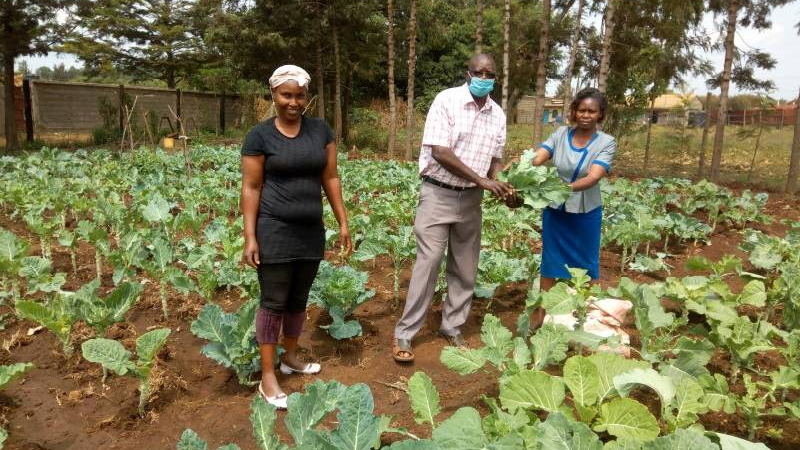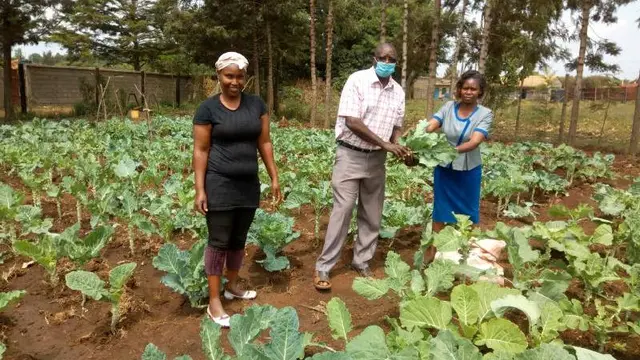
File Pic: Kenyan farmers at Roka Preparatory School in Kirinyaga, central Kenya. /Xinhua
Inside his feed store in Kajiado, south of Nairobi, Kenya's capital, livestock farmer Paul Sosonik has tens of hay bales that he has stored for his 12 Friesian dairy cows.
Sosonik has further stored some silage in a bunker, but it is not as much as the hay. "I grew the fodder grass in March; the rains were not adequate but I managed to harvest, and store," he said.
While his animals are assured of feed, he knows the coming months are not going to be easy as the east African nation is going to experience drought. "I belong to several farmers' social media groups and the weather forecast in the coming months was posted there. We know how tough it is going to be," he said.
Eastern Africa will between October to December experience drier than usual periods, according to the Intergovernmental Authority on Development (IGAD) Climate Prediction Center. Kenya, Tanzania, Burundi, Rwanda, Somalia, Eritrea and Ethiopia are among countries in the region that will experience a tough climate.
"Observations of rainfall over the past months reveal that the region has been facing rainfall deficits in many parts of central and southern East Africa and this is forecasted to continue until December 2021," observes IGAD in its latest forecast released Thursday.
Having received the forecast, Sosonik and many farmers in the east African nation are planning on how to survive the tough climatic conditions. And they are doing it using social media groups, discussing what they can do to survive the period so that they can continue with their farming activities.
"One way to beat the drought is to till the land this September and then plant fodder grass as soon as the rains start," Bernard Kirui, a farmer advised livestock keepers in one WhatsApp group.
Eric, another farmer, weighed in. "We have to be smart. A smart person thinks ahead and turns misfortune into fortune. Now that we have heard of the big drought that is coming, we should arm ourselves with wonder foliar; grow fodder for livestock and turn it into silage and pack it with nutrients. We will sell these feeds to livestock farmers helping save their animals as we make money."
Similarly, Kenyan crop farmers are working to ramp up food production through irrigation during the dry period.
"Farmers have no excuse, we now know in advance about the upcoming adverse weather conditions thus we must prepare adequately," said George Karithi, who farms tomatoes in a greenhouse in Kitengela, south of Nairobi. Having received the weather prediction, he is going to work on his water harvesting and store enough for his crops to survive and thrive during times of extreme scarcity.
"By the time October comes, I would have already constructed a farm pond which I will use to harvest water as soon as the little rains start," said Karithi, who currently uses borehole water.
Beatrice Macharia, an agronomist with GrowthPoint, an agro-consultancy, said that with social media groups, the spread of climatic information has become faster and easier. "Farmers are no longer farming in the dark as they know what to expect and do as they discuss the issues. I am in several social media groups and the expected drought information spread so fast as soon as it was released," she said.
Macharia noted that the online groups have become key in planning for measures to mitigate climate change as most of them are formed by experts and farmers in one region or locality, thus helping members understand what needs to be done and how it should be done.
Source(s): Xinhua News Agency
 简体中文
简体中文

